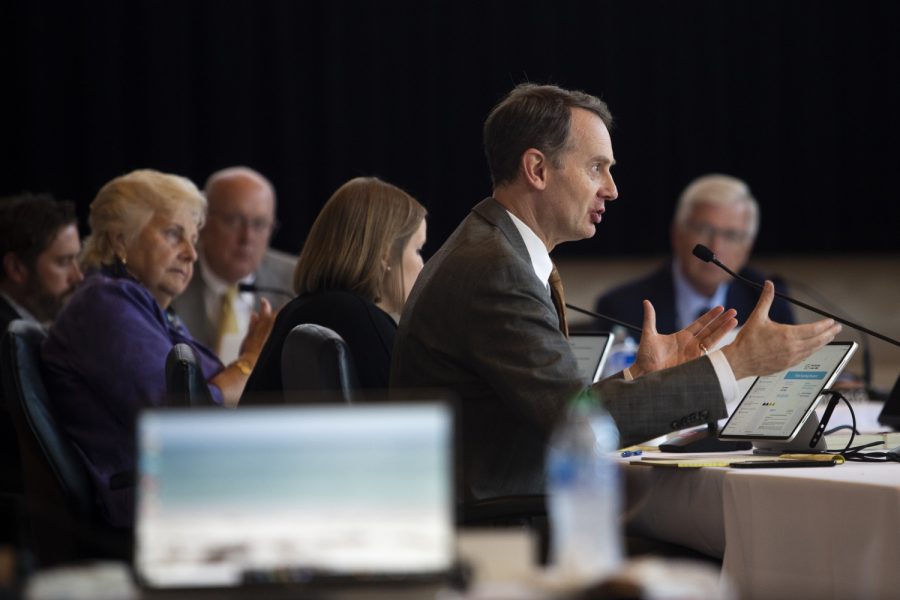Advocates from Allamakee County came to Iowa City to discuss the process of hydraulic fracturing, calling it “a hot spot for silicosis.” The group said these new mining sites could potentially cause health risks to individuals working and living in the area.
Allamakee County Protectors — a group of Iowans fighting against fracking sand mining — have traveled throughout Iowa, speaking about the large number of life changes community members in Wisconsin have experienced since 2010, when the state saw an explosion of fracking sites.
In July, Robert Nehman and Ric Zarwell — cofounders of the Allamakee group — managed to get a moratorium passed that remains in effect until July 1, 2014, to stop fracking sand mining sites from coming to Iowa. The two members spoke about the large effect to air quality and water quality, which could possibly hurt the large number of tourists who come to fish for trout.
“This is not a political issue,” Zarwell said. “This is a moral issue, this is an ethical issue, this is an environmental issue, and we need to prevent this from happening. We are the first to try to prevent the first new mine in Iowa.”
David Osterberg, a UI clinical professor of occupational and environmental health, said the fracking industry has been an increasing phenomenon in Wisconsin, Minnesota, and parts of northeastern Iowa. In 2010, there were nearly five of these mines in Wisconsin, and now there are more than 100, Osterberg said.
Researchers such as Osterberg at the UI recently received a grant during the fracking moratorium to study the health risks, which could develop in individuals who work or live near the mining sites.
He said the main goal of the study is to monitor the community exposures to the crystalline silica from sand mining sites and other occupations, which would be exposed to this substance.
“We were approached by people in Iowa wanting to know if this was a large risk by air admissions with crystalline silicon,” Osterberg said. “We will be doing monitoring and modeling to find out if there will be a risk with new mining and how you might be able to reduce that risk.”
According to the U.S. Department of Labor’s website, these mining sites can protect these workers by monitoring the air the workers are exposed to, control dust exposures, and provide respiratory protection to workers.
Osterberg said one dangerous and deadly disease caused with working with the substance is silicosis. Tom Peters, a UI associate professor of occupational and environmental health, said it is a disease deep in the lung from silica, which can cause scarring of the alveoli— the gas-exchange portion of the lung.
“It is a chronic disease, meaning that a person can lose lung capacity over long periods of time,” Peters said. “I’ve heard it likened to breathing through a straw that gets smaller and smaller until you cannot get enough oxygen into your body.”
Even though the health effects from the silica substance are not immediate, the Allamakee County Protectors said they are afraid for bringing the dangerous substance to communities in Iowa.
“No one is going to see the health effects overnight,” said Nehman, vice president of the group. “But our children and young adults who live in the areas could see the health effects of silicosis later in life.”
According to the Centers for Disease Control and Prevention, almost 1.7 million U.S. workers are exposed to crystalline silica in occupations such as construction, sandblasting, and mining.
“Universities like ours should be doing things for the people of Iowa,” Osterberg said. “Here is a time where our area of expertise, elected officials, and citizens of Iowa are very interested in this topic. We were very happy to be able to get a grant to answer these questions.”






